If waiting seven years for the third game from Ico and Shadow of the Colossus creator Fumito Ueda has taught us anything, it’s patience, which is exactly what’s needed to see our young hero and his massive catbird companion through to the end of The Last Guardian.
Originally announced in 2009 for a planned release in 2011 on the PlayStation 3, The Last Guardian suffered various delays and setbacks, leading to speculation that the project had been canned entirely.
The game finally resurfaced last year, now a PlayStation 4 title with a release date of October 2016. One final delay later and here we are. The Last Guardian is a real game, with a box and everything.
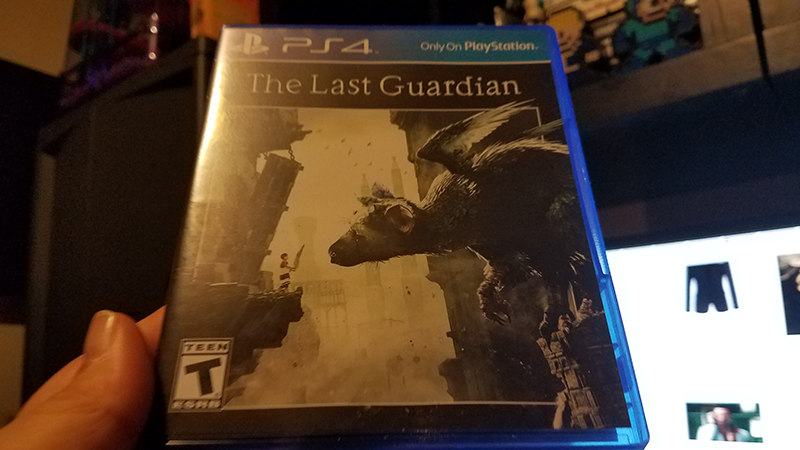
Holding a feather is not something you do in this game, so consider this art a game case exclusive scene.
Considering development began in 2007, that means Team Ico has spent nine years creating The Last Guardian. Normally a development cycle that long might indicate sweeping changes made to the game between its debut and release, but not here. What we saw in 2009 is essentially what we’ve gotten in 2016.
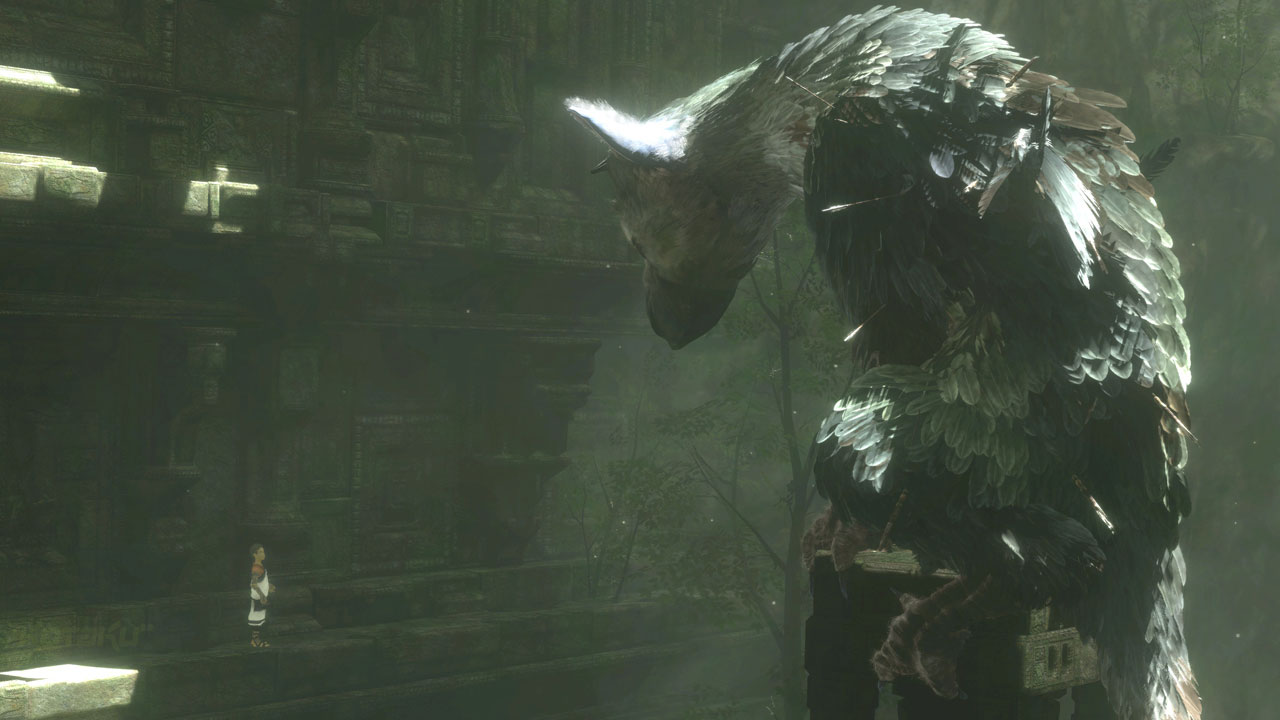
The Last Guardian screenshot released in 2009.
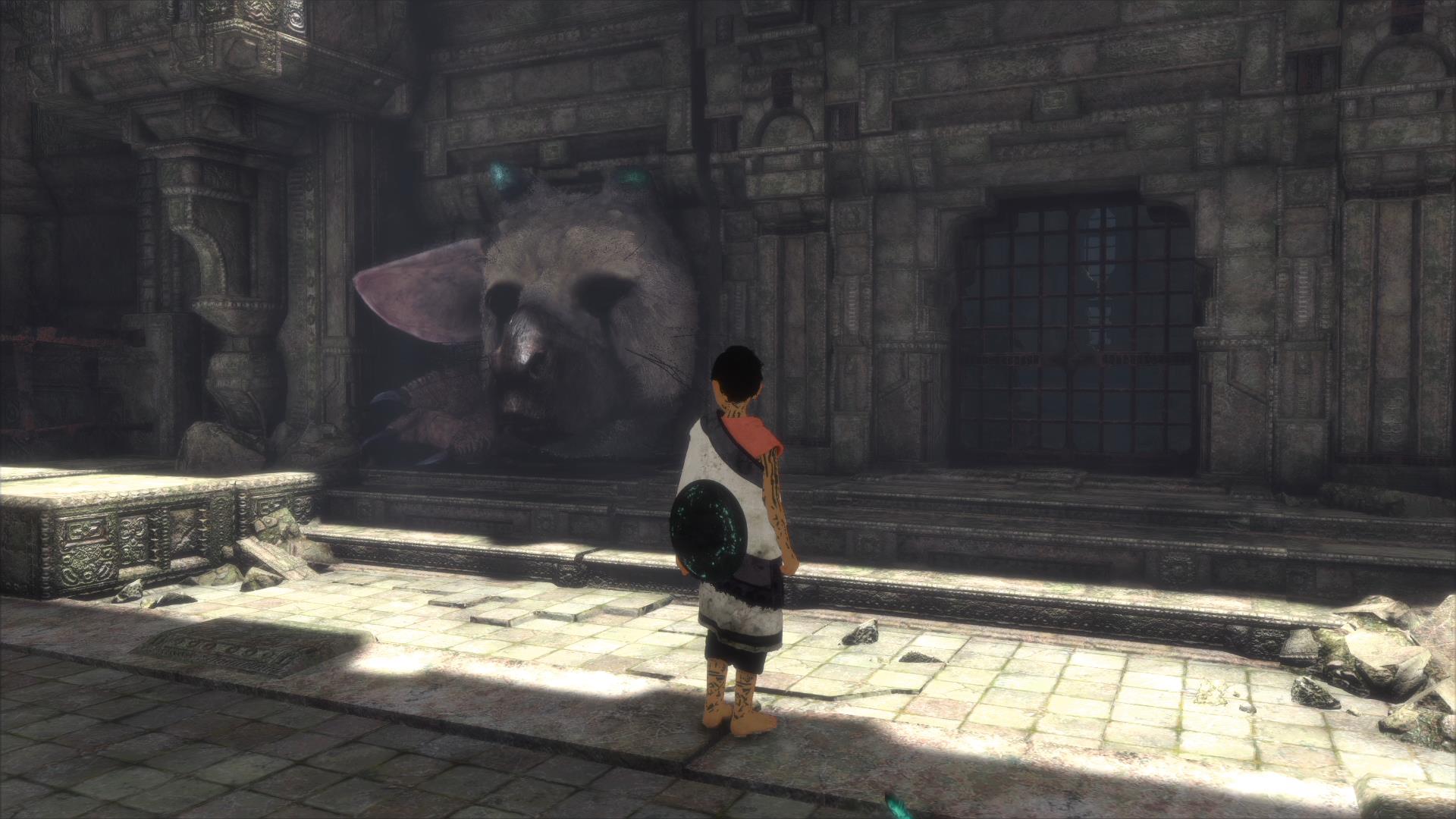
The Last Guardian screenshot taken during my review playthrough. Trico has a knack for squeezing through small spaces.
As explained by game director Fumito Ueda following the 2015 E3 re-reveal, the game he and his team were building demanded too much of the PlayStation 3 hardware. In 2012 the development shifted to the PlayStation 4, the newer console’s additional power used to finish the game without compromise.
What we’ve wound up with is very much a Team Ico game. Bloom lighting pleasantly washes across crumbling ruins slowly being reclaimed by nature. The sparse musical score lies dormant, awaiting moments of tension or dramatic import to make itself known. The protagonist is a young boy who must make his way through a sprawling fortress riddled with mysterious inhuman enemies using a combination of platforming and puzzle-solving skills. The Last Guardian could very well have been Ico 2, if not for its massive co-star.
The Last Guardian opens with our human protagonist waking on the floor of a massive cavern with no memory of his arrival. Beside him, taking up a substantially larger patch of cave floor, is a gigantic horned and feathered house cat. The boy calls this legendary creature Trico (or “Turiko”).
Realising the beast is wounded and hungry, the boy scavenges a few barrels of food, pulls broken spears from its hide and removes the chain binding it to the cavern floor. From that point forward, the pair are nigh inseparable.
At first their interactions are basic. Trico follows the boy as he explores. Sensing some hidden food, the creature sits in front of a high ledge, allowing the boy to clamber up its body, Shadow of the Colossus style. After freeing the food the boy finds a passage hiding a shield covered with glowing symbols.
Using that shield to focus sunlight on an obstacle activates Trico’s lightning-firing tail, obliterating the obstruction and allowing the pair to pass.
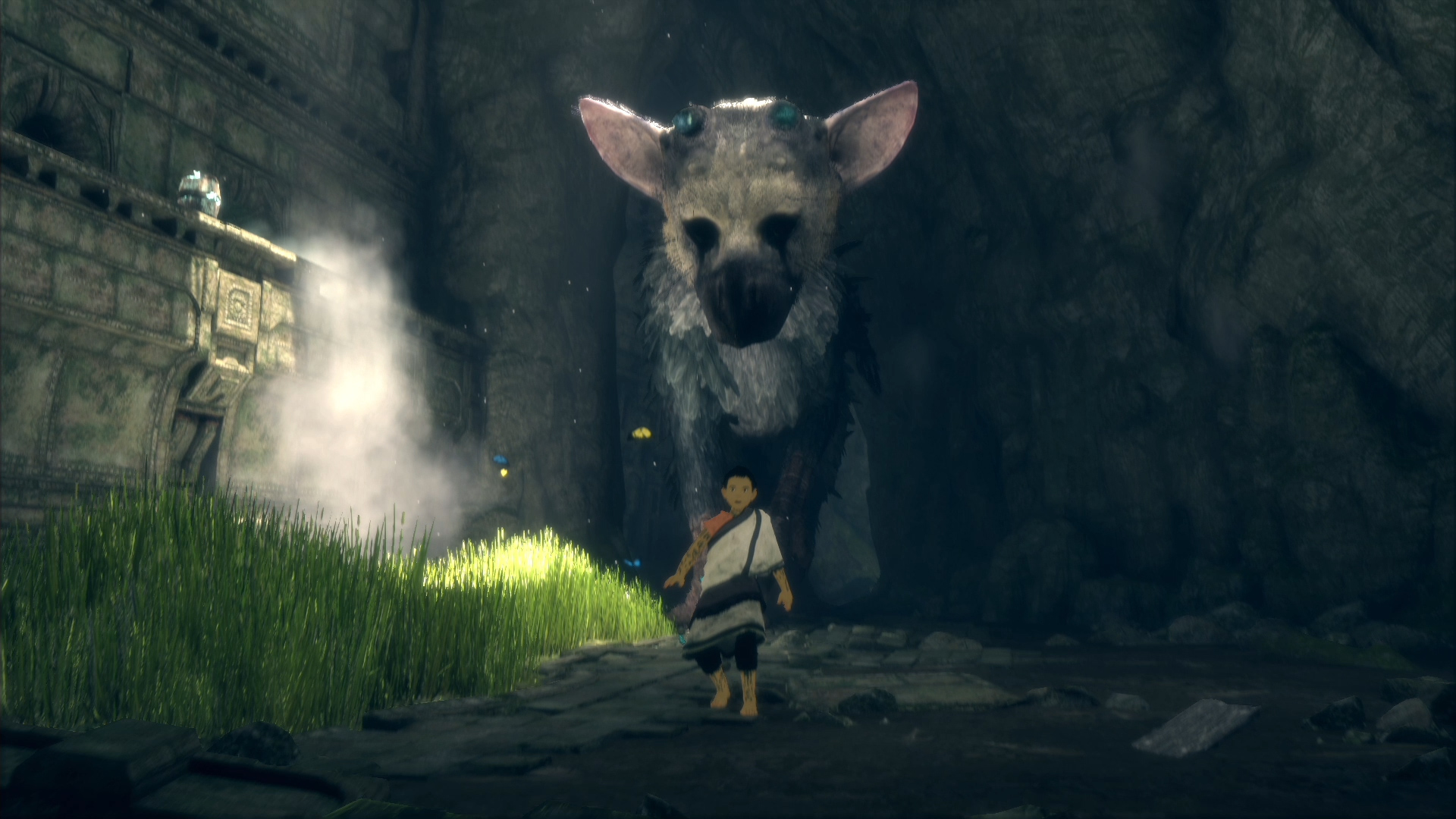
And everywhere the little boy went, Trico was sure to go.
As the game progresses, so does the relationship between beast and boy. When stone soldiers begin to appear, threatening to drag the boy into some strange netherspace, Trico defends his friend ferociously, tearing into the enemy. When the battle ends it’s the boy’s turn to calm Trico’s fury with calming belly rubs (or whatever-he-can-reach rubs) and heal his wounds.
Then things get complicated. Nearly two hours in, I gained the ability to issue commands to Trico.
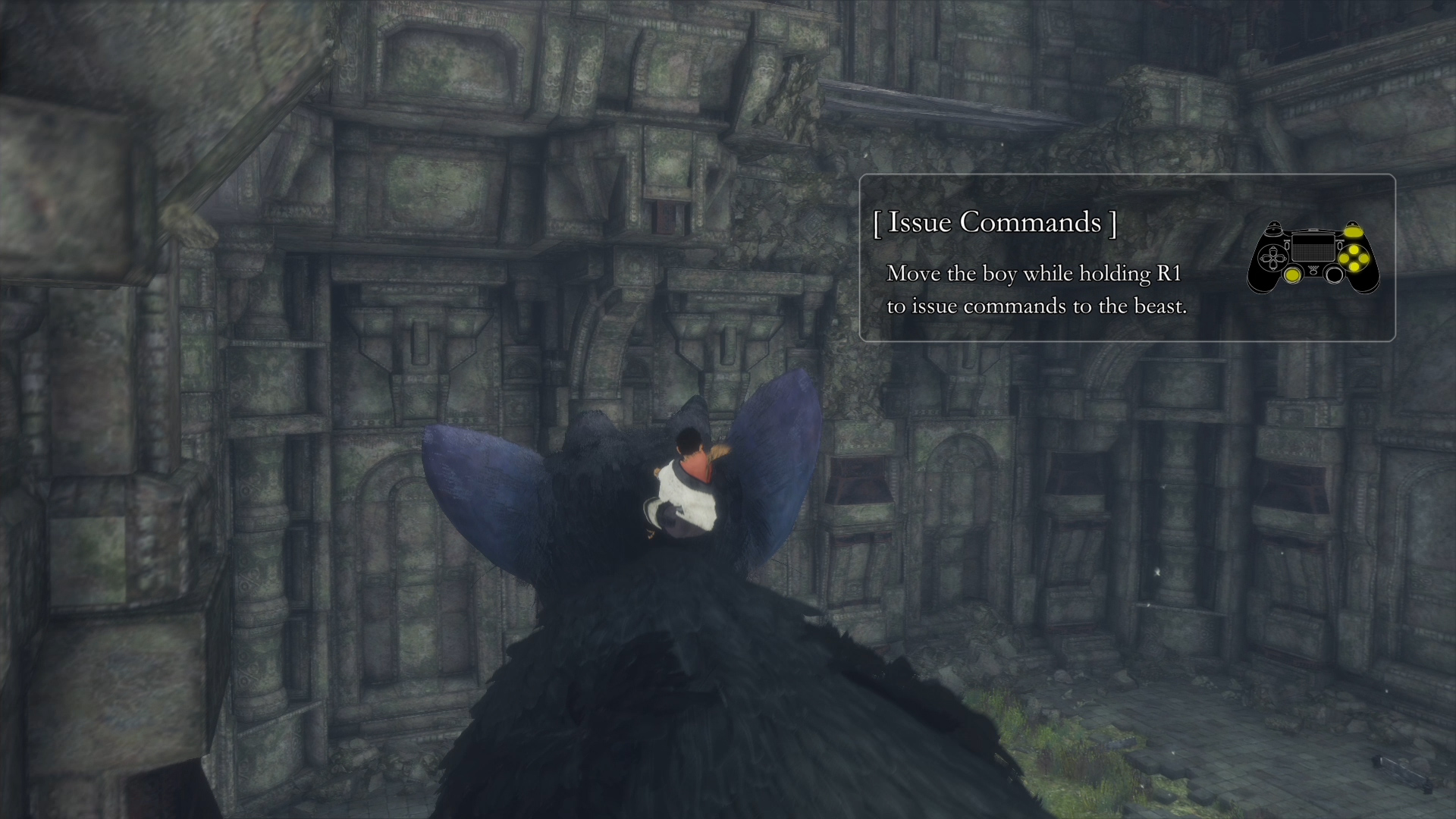
As with many aspects of the game, these instructions are purposefully vague.
By holding down the R1 button and either moving or pressing buttons, I was now able to suggest where Trico might want to move or jump or whatnot, should he feel so inclined. It was at this point it became readily apparent that my cat-bird thing wasn’t like other video game companion characters. For better and for worse, Trico has a mind of his own.
Before this, gameplay was relatively simple. Enter a room, find the way to the next room. If Trico can’t follow, find the means to allow him. If enemies are present, determine how to get Trico into their proximity. If you see a lever, pull it. Pretty simple stuff.
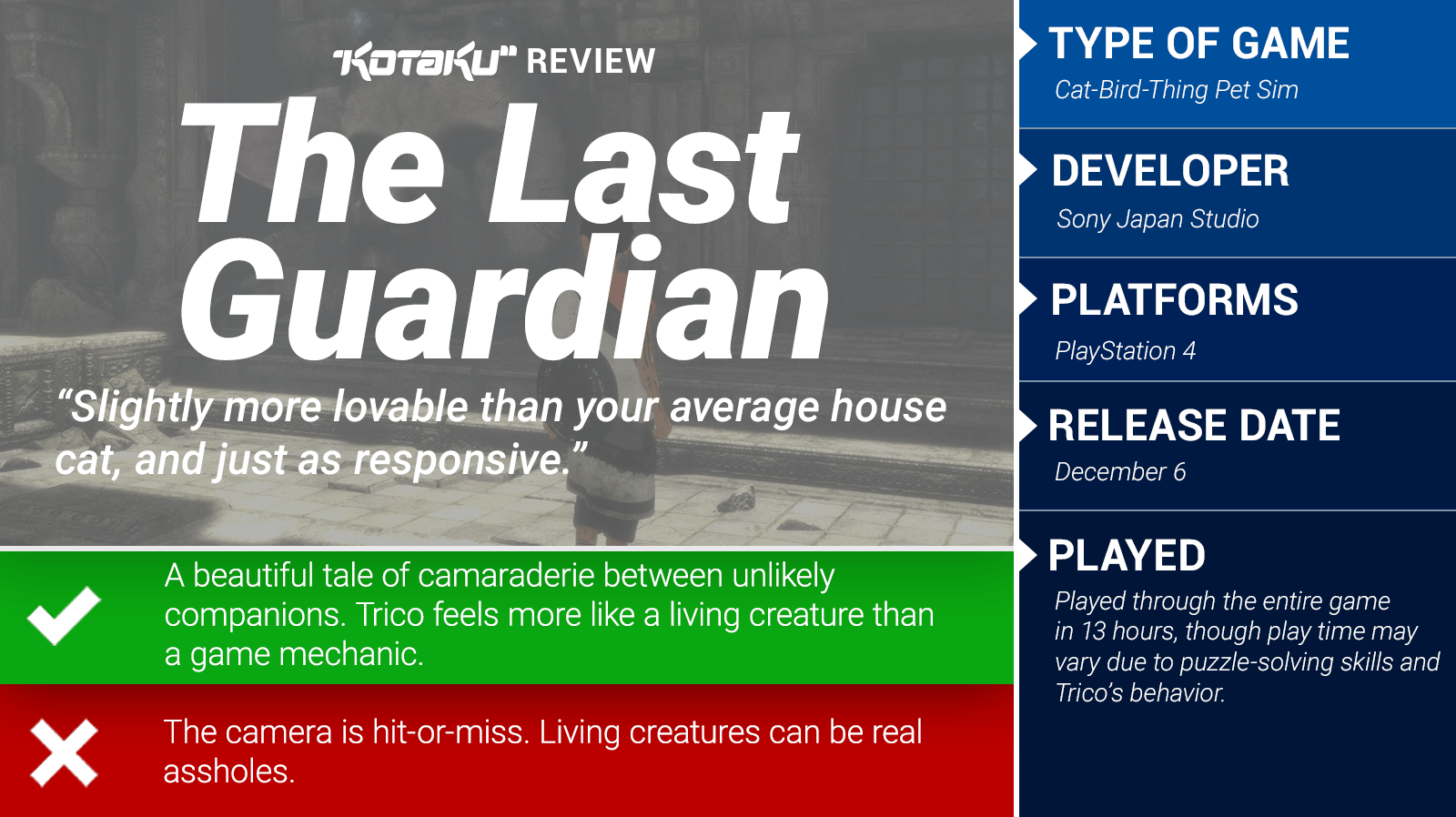
Once commands become available, Trico’s artificial intelligence comes out to play, and it doesn’t always play nice. Following the gameplay demo shown at E3 2015, Fumito Uedo explained that the demonstration had to be prerecorded, as the AI couldn’t be expected to behave in a stage demo-friendly manner.
Sometimes Trico is perfect. He’ll see the ledge I want it to jump to, recognise my character’s hopping motions, and leap gracefully through the air, small boy clinging desperately to his back. That’s a good Trico, making me feel like we’ve reached a new level of understanding.
Other times he’ll make a warbling noise, maybe sniff at the wall I want him to hop over. Maybe, in the middle of a series of complicated jumps, he’ll turn around and go back the way he came. Or perhaps I’ll spend five minutes trying to make it jump to a new area, mistake the creature’s reluctance for misdirection on my part, only to have him immediately make the jump once I’ve spent another five minutes exhausting all other possibilities. That’s a bad Trico, slowing an already leisurely game to a plodding crawl. Good thing we had all of that practice being patient, right?
The unpredictable AI can make for some frustrating moments, but that frustration only enhances the illusion that this strange cat-beast is a living thing.
I am not irritated with a video game. I am irritated with my large feathered friend.
In an unearthly castle filled with sinister animated armour, accompanying a small boy with single-tone skin and simple features, Trico is the most realistic creature in The Last Guardian. He moves like a real animal. His feathers shift with his skin as he pads along. Before he jumps he shifts weight between his back legs and hunches down like a cat. When I clamber atop his head and pet between his ears twitch appreciatively.
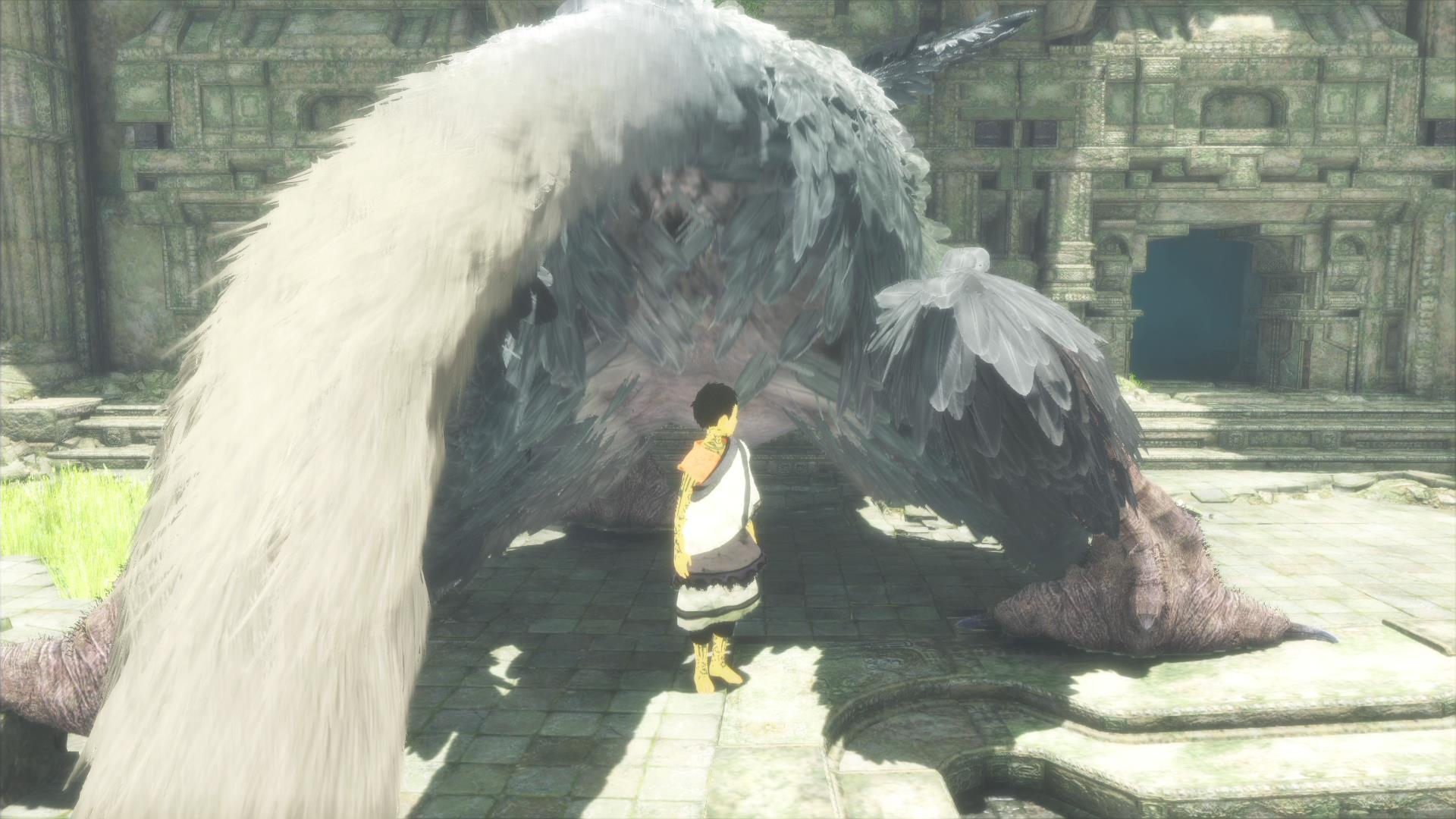
And the award for most realist cat-bird-creature anus goes to . . .
The fantastic creature’s relative realism helps cement the bond between him and the player’s in-game avatar. Through my 13 hour play through of The Last Guardian I found myself comforted by Trico’s presence. Despite his bouts of mercuriality, I counted on the beast.
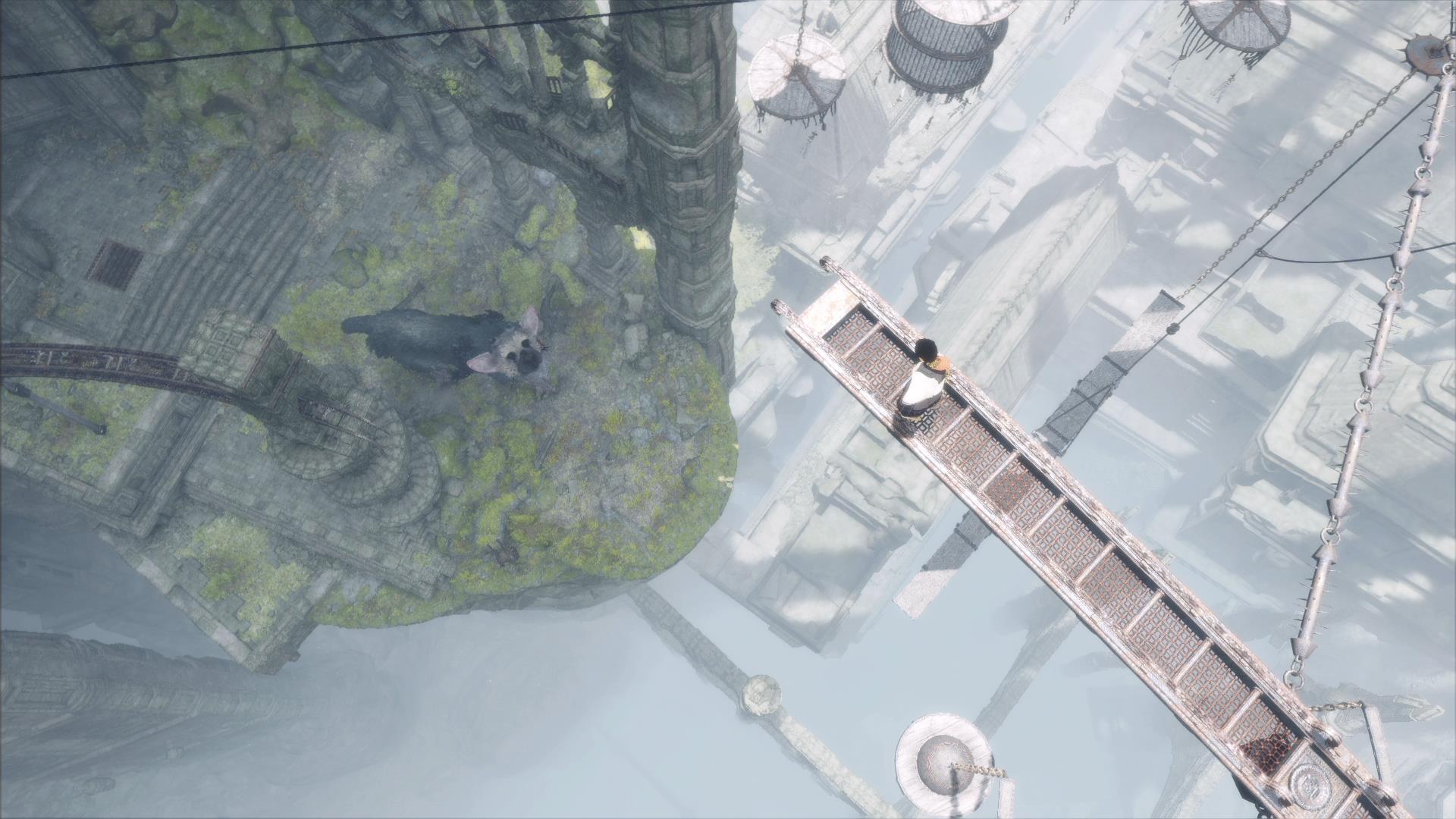
Afraid of heights? You’re going to loooooove this game. Note the sarcastic extra Os.
The relationship isn’t without its downsides. Being a tiny human often riding atop a massive creature doesn’t do the game’s camera any favours, especially in tight confines. There were moments on our journey where attempting to locate the boy on Trico’s back using camera controls resulted in either a face full of feathers or a completely black screen. Between that and occasionally getting knocked off of platforms by his scaly bird feet, it pays to be mindful of the cat-bird’s position at all times.
The Last Guardian is a slow and thoughtful game. The player spends most of their time opening up paths for Trico through platforming and puzzle-solving. While the boy becomes slightly more active in battles as the game progresses, his main concern is making sure his companion can reach their easily-avoidable enemies in order to swat them down. Should the boy be captured, escape is just a rapid button mashing away.
The remainder of The Last Guardian’s challenge lies is getting Trico to do what you want him to. After describing the creature control ups and downs to a coworker who hadn’t played the game, he said it sounded horrible.
But he didn’t know Trico like I know Trico. Time and time again the magnificent beast saved my life, risking his own to remain by my side. The lengths Trico goes to demonstrate his dedication are inspiring. If he wants to spend a couple of minutes sniffing a tower, who am I to deny him?
Eschewing the spare storytelling of previous Team Ico games, The Last Guardian’s plot unfolds in a series of easily digestible cutscenes. It’s a dark fairy tale that probably isn’t quite what anyone expected, but ultimately serves to make the friendship at the core of the game even more remarkable. The Last Guardian is about two lost souls becoming one, and the strength and joy found in that conjunction.
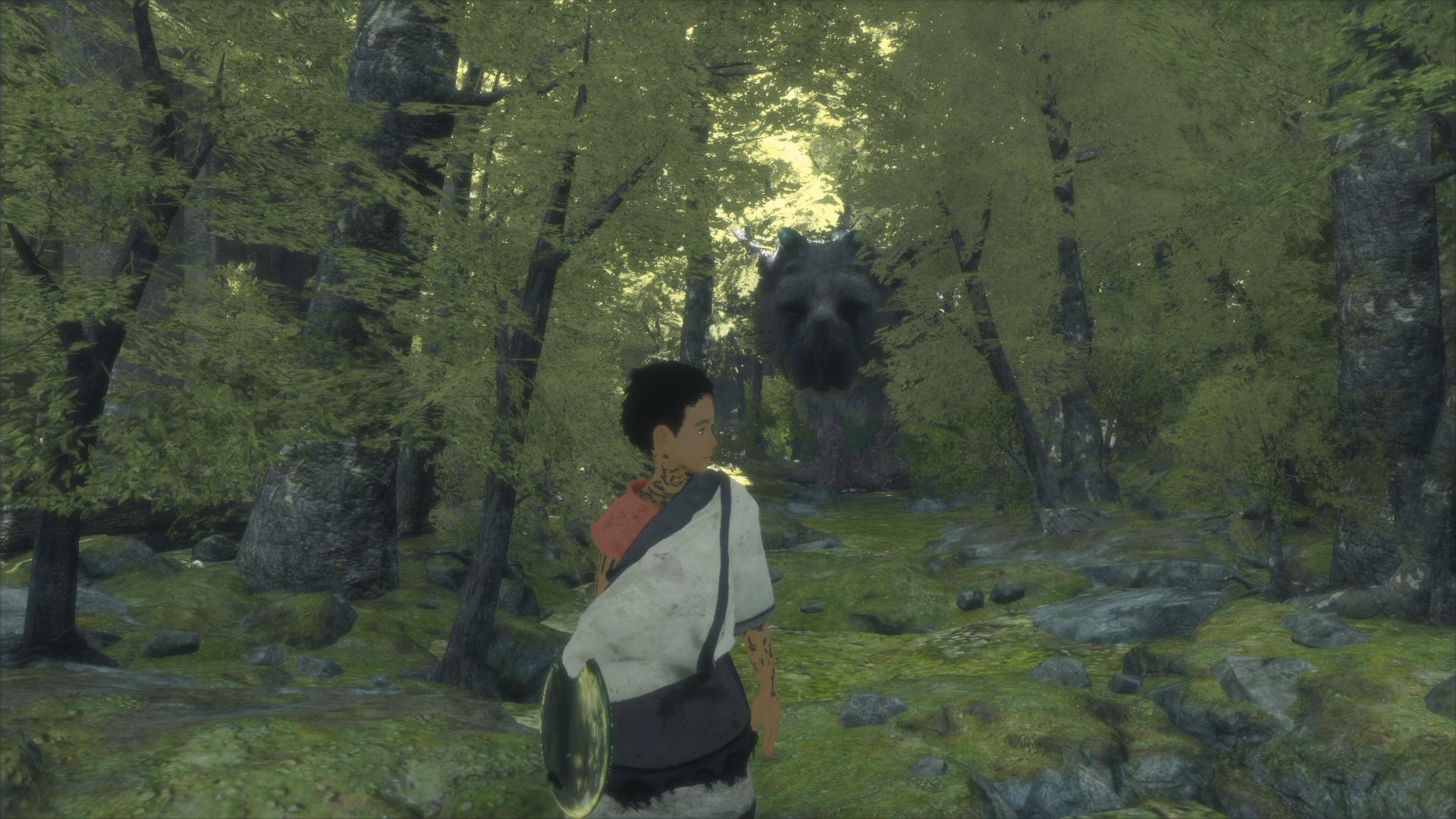
Who could say no to that face?
As with any relationship, there is work involved. Trico and the boy might not always see eye to eye and they aren’t always heading in the same direction, but with understanding and patience the bond they share is sure to stand the test of time.
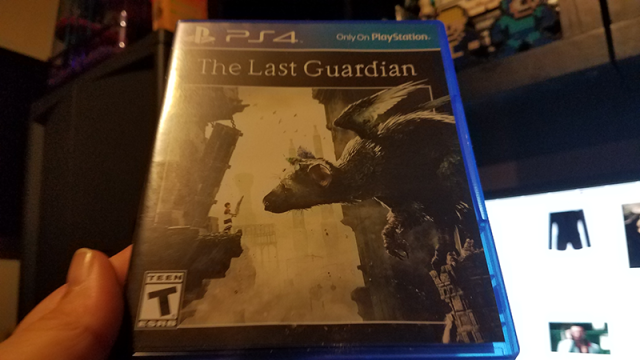
Comments
14 responses to “The Last Guardian: The Kotaku Review”
This is a Team ICO game. Did anyone doubt that the game would strike an emotional chord with the player? I didn’t. Ueda is a master of minimalistic gameplay and story telling. A third time, and he’s still on target, even if he took his sweet time releasing the arrow.
Day 1, bitches.
“It’s not bad AI, the monster is supposed to be stupid” is the best post-modern game excuse since “it’s not that we did no playtesting, it’s a glitch in the Animus”.
For some reason it doesn’t unlock till 7/12 on PSN.
Looking forward to it.
I was worried that the AI would be a problem. It sounds like it will only take an AI glitch or poor RNG to block progression which, for me, isn’t what I call fun in a game.
Hm.
I have a feeling that this is been so heavily-hyped and anticipated that the gorgeous visuals/audioand emotional story will – for many people – help carry an otherwise mechanically tedious/frustrating game into being considered just ‘pretty good’.
A vague sense of disappointment will be shoved to the backs of minds because, “Hey, at least it came out, and it’s not bad,” but once the feels are finished being discussed and gushed over by those who persevered through the frustration, the game will quietly fade away into number six or even eight on peoples’ ‘top 10 of 2016’ list.
Just a gut feeling.
Not commenting on this game (because I haven’t played it), but there’s certainly a dark art to manipulating stupid game reviewers by placing “artiness” on top of average mechanics.
IMO it manifests itself because so many game reviewers are so heavily invested in the medium. The same validation craving people who feel the need to argue (constantly) that “games are art” and “I am not a MAN CHILD!” are easily exploited by mediocre games that appear to fit that narrative.
I’m not saying that it will turn a terrible game into a critically acclaimed title, and some of it IS the fact that interesting art and storytelling are worth rewarding, but I’m certain it’s a factor.
Whoa way to be dismissive and generalising. Not everybody who argues that games are a an art form are insecure man-children trying to validate their pastime with pretentiousness. Similarly there’s no need to be so cynical to believe that “artiness” is merely a blasé dressing used to appeal to such types while hiding mediocrity in other areas.
It’s like saying that people who rant against the idea of “games as art” are elitist, antiquated douches vainly trying to protect outdated ways of thinking because their fragile egos are on the line and they loathe the inevitable feeling of being replaced by a newer generation, alien to them.
I don’t know. How do you feel about ICO and SotC? They both had their frustrating and tedious moments. The games transcended them, and over time, are now considered masterpieces by many, and still fondly remembered as some of the best gaming they’ve experienced.
I guess it can go both ways. It just depends on the game itself, and how unique and meaningful an experience it is. Frustration can be more easily forgotten than the feels.
I think the amount of hype the game had and the duration of it is another factor that ICO/SotC didn’t have to deal with. Hype leads to disappointment. Disappointment leads to somethingsomething dark side.
That’s true, though disappointment does not necessarily follow hype.
Also, TLG has had an extremely minimal amount of game exposure, leading to a reasonable level of hype. Sony have been very quiet on this front, and have hardly said anything about the game. People even thought that the game was abandoned, at one stage! It’s only in the last year that we’ve heard anything solid about the game, and even then, limited to a demo played by journalists at E3.
Strange how everything seems to lead to the dark side. Perhaps we’re already there, but it’s become the norm.
Uhm… I guess some folks really really love to really really hate the things they really really love?
¯\_(ツ)_/¯
Yeah this was what I was thinking… both Ico and SOTC are terribly clunky frustrating experiences at times, and yet these issues were, as you say, transcended.
I’ll give this a go when i’ve got some time and mental space to sit down and go through it, but am expecting some frustration and floaty controls to temper the experience a bit.
I find it interesting that people managed to overhype it, especially given the Team ICO/ Ueda habit of doing exactly what you say.
Amazing visuals and music on top of very basic and minimal mechanics.
The big one being SotC, with its almost staggering bare bones gameplay that resulted in an amazingly deep experience.
I’ve been stuck in the idea that Trico will die and devastate me and it’s a little hard to hype up my dog dying lol